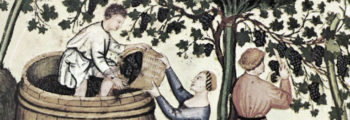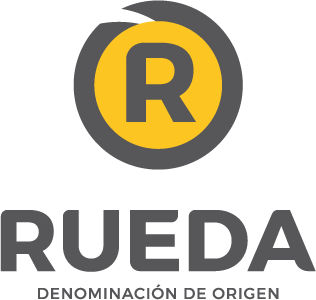Rueda
Winemaking
History
Middle Ages

The origins of wine in the area date back to the Middle Ages, when the grapes were transported to nearby wineries
Reign of Alphonse VI

The Verdejo grape reached Spain through the Mozarabs, who repopulated the Douro basin.
Spanish Golden Age

At this time, the most famous wine in the area was Dorado, considered the court wine during the age of the Catholic Monarchs
1911

A royal order declared ‘Vino de Medina’ to be a special wine, similar to the wine made in Jerez and Malaga
1980

The Designation of Origin was created, being the oldest in Castilla y León.
2008

Since this year, the D.O. Rueda Regulations have permitted production of different categories of red and rosé wines.
Historical References
- In the late 14th century, the first evidence suggested the possibility that wine consumed in the taverns of Bilbao was the precursor to the current Rueda white wine.
- In the 15th century, the region’s wines began to gain popularity under the name ‘Tierra de Medina wines’.
- In 1494 the first ordinances aimed at protecting the vineyard in the Rueda area were issued.
- Isabella I of Castile was particularly fond of Tierra de Medina wine, and in 1498, issued ordinances that were clearly protective of the vineyard. Years later, her grandson Charles V would expand them.
- The 16th century would be fundamental for the consolidation of Tierra de Medina wine. Due to the boom of the fairs in the city of Medina del Campo, the wine consumption radius of Tierra de Medina expanded, and the north of Spain emerged as the main consumer. As wine was easy to transport, it became a product of exchange used in important commercial transactions.
- In 1564, it became necessary to draw up an ordinance to combat wine fraud, a result of its accelerated development due to the fairs, which caused winegrowers to resort to falsification and other dishonest practices in order to guarantee its supply.
- In the mid 16th century, the Medina fairs went into decline, and in 1626, it became necessary for the members of the Vineyards Corporation to take restrictive measures and prohibit the sale of new wines not produced by members of the Corporation. As a result, a new ordinance differentiated between the fine wines from the city of Medina and the common ones from the rest of Tierra de Medina.
- In the late 16th century, Medina del Campo and Alaejos shared fame and a wine trade, and ‘Medina-Alaejos white wine’ was so extolled that, for a time, some municipal ordinances forced merchants from the Court of Madrid to purchase Tierra de Medina wine in these two municipalities alone.
- A royal provision from 1634 that made it necessary to seek authorisation to plant new vineyards was used as a weapon by ranchers, who clung to it to fight the spread of the vineyard and gain privileges.
- The decline in fairs and the increase in trade with the north moved wine production to better-located towns along the route, which is why in the 17th century, La Nava, La Seca and Rueda took over for Medina as wine-producing locations.
- In the 18th century, the wine of Old Castile shone with renewed splendour. White wine from La Nava took centre stage and saw a boom until 1798, when the ordinances reflected the clear setback that wine from the area was experiencing. Meanwhile, Rueda wine had a similar fate, with initial glory and progressive decline during the later part of the century.
- The vineyard in La Seca grew to such an extent that a judgement was issued to try to stop it and restore the lands’ original purpose as communal pastures. Following the ineffectiveness of this measure, in 1763, 409 hectares of vineyard were destroyed in the municipality; despite it all, La Seca entered the 19th century with winemaking in full swing.
- The 19th century was a fruitful period for wine from La Nava, La Seca and Rueda. The traditional trade with the north remained important, and it began to be exported to France, England and Cuba. The arrival of the railroad was a strong boost for the wine trade. On the other hand, the launch of the vineyards of New Castile and Levante diminished the preponderance of Tierra de Medina wines, and the arrival of phylloxera in 1884 marked the end of a long period in the history of Rueda wines.
The launch of D.O.P. Rueda
The first Regulations governing D.O.P. Rueda and its Regulatory Board were approved by an order of the Ministry of Agriculture, Fisheries and Food on January 12, 1980, making Rueda the first recognised Designation of Origin in the autonomous community of Castilla y León.





